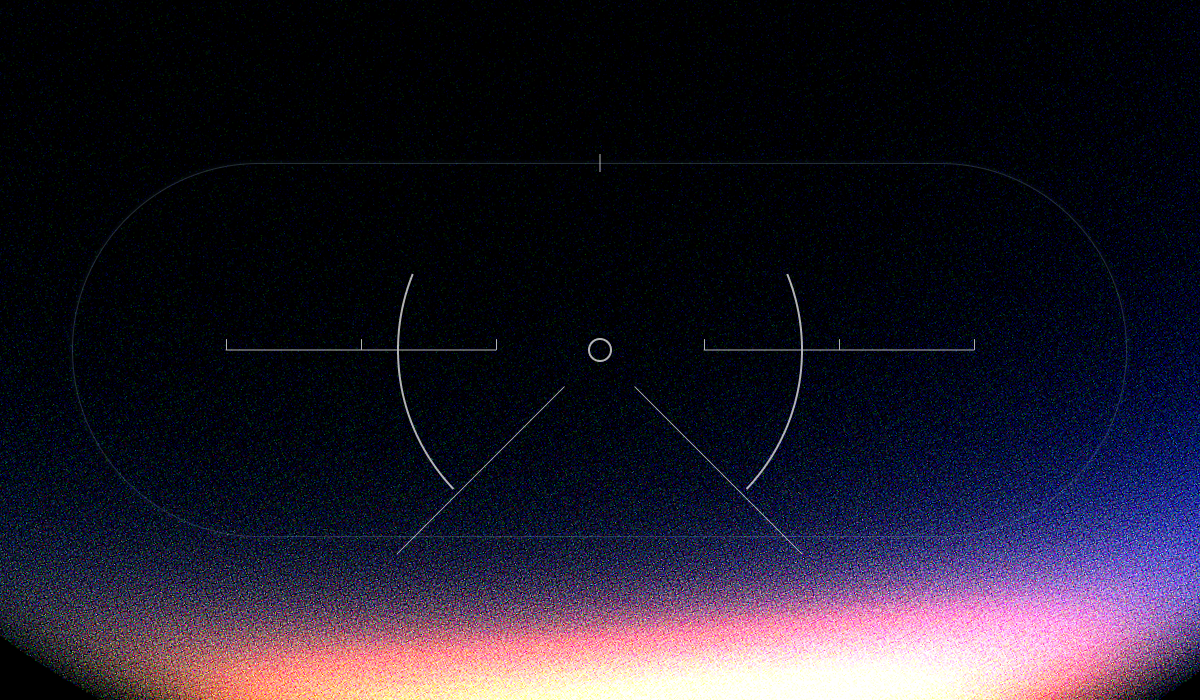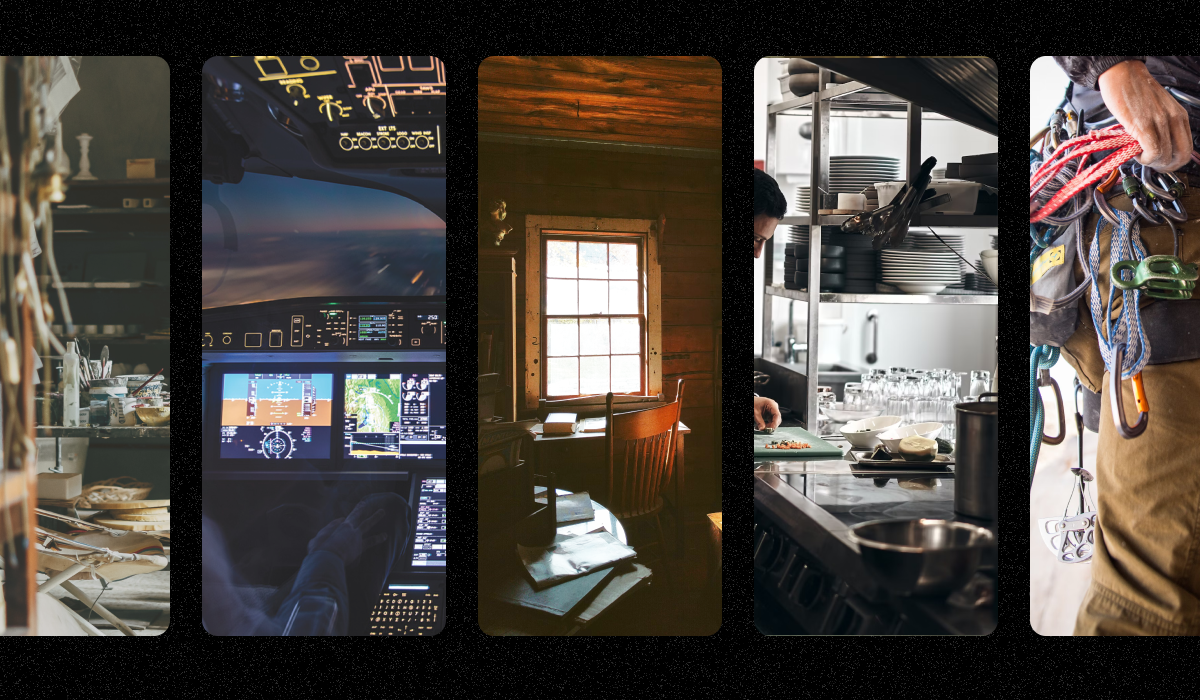What you pick when you pick your tools
Science deserves thoughtfully-designed software
Science has progressed at an astounding rate over the last few decades, but the software powering much of this work is most often confusing, slow, and difficult to use. In this post, we discuss how thoughtful design has the power to elevate the science being done by teams around the world. If anything here (or anything we’re doing at Kaleidoscope) resonates, please reach out!
Summary points
- Your tools and workspace drive performance. Our tools and environments shape the work we do. Well-designed environments reduce our cognitive load by making choices for us, informing us of best practices, anticipating our needs, and reducing our mistakes.
- Life science has been starved of well-designed software. Most tools used by bio companies look, feel, and behave like software from generations ago. Software should be enabling better, faster, and novel work, not limiting users or introducing cognitive load.
- Clearly communicated science is better science. Biotechs swim in a sea of data, making it hard to see signal in the noise. Transparency of decisions made to underlying data requires thoughtful design and tooling.

We are in a golden era of science, with large strides being made in molecular and synthetic biology, high-throughput instrumentation, and applications of novel computational methods. Outsiders might assume scientists have world-class, considered software to drive their work – instead, it’s confusing, slow, and difficult to use. This is both counterintuitive and in stark contrast to consumer software — most of us can think back to some magical “Woah, that’s cool!” moments that we’ve experienced with our day-to-day tools. Unfortunately, biotech’s approach to software design and user experience has lagged dramatically behind mainstream tech.
Why is this the case? Vega Shah, PMM at Benchling, wrote an interesting piece arguing that it’s because biology workflows are chaotic, which makes it difficult to prioritize design and usability over functionality. Jesse Johnson, CTO at Serna Bio, has a great blog on this topic about how the need for flexibility steers scientists towards kitchen sink tools like Excel. Or, if not Excel, in-house software stitched together by people who aren’t trained in UI or UX. Regardless of the reasoning, the common thinking in biotech is that software design and usability are largely superfluous: what matters is getting the job done, and user frustration or confusion is unavoidable.
At Kaleidoscope, it’s our belief that this stance is short-sighted: it creates a false dichotomy between good design and practicality, and it puts limits on what could be possible, if more emphasis was placed on usability and more empathy was applied to building tools for the space.
There are countless examples across industries that illustrate the power of design in pushing limits (some obvious and others less so). Imagine the cockpit of a jet, a turntable for a DJ, an artist’s studio, a writer’s cabin, an athlete’s high-performance gear, or the kitchen of a Michelin-star restaurant. Each of these instruments and spaces are arranged in a very specific way to maximize performance, speed, and ease of use. They are arranged this way because our tools and environments shape the work we do. The best ones make choices for us, inform us of best practices, anticipate our needs, and reduce our mistakes. A well-designed piece of software reduces cognitive load so your cognition goes towards what matters rather than struggling with the tool.

For bio companies, your data is your science. Often, the data being generated is huge in volume and will pass through many hands, across many teams, and take many different formats. Having intuitive and accessible vessels to cultivate, curate, and summarize that data helps your team do the best science they can. Well-designed tools will guide you towards ensuring your work is traceable and reproducible, and can provide clear signals on where your evidence is strong or weak. This gives you the space to focus on more important things, like scientific reasoning. On a management level, good design can also drive transparency in reporting, decisions, and the high-level decision-making behind a company’s science.
On the flip side, even minor oversights in design can cause substantial setbacks for those that interact with that software. A lab management software with unintuitive data entry fields might lead to incomplete metadata for samples, making future reference and replication difficult. A data platform that has an unclear user role definition might give inappropriate access to team members or even third parties. A collaboration tool that doesn’t support real-time syncing might cause data engineers to overwrite each other’s work. A visualization tool with poor UX might mean missed opportunities or outright miscommunication by those tasked with distilling complex data into comprehensible insights. On top of setbacks like these, there’s the activation energy required for new team members to learn how to use clumsily-designed software – energy that could have been better spent elsewhere.
Poor software design places a significant burden on the teams doing the science, and results in them paying the price via big gaps in efficiency, accuracy, and ability to collaborate effectively. While these problems may have historically been inevitable, our understanding of software design principles has evolved significantly over the decades. The bar should constantly be going up with each new generation of tool and user, as we build off of the cumulative learning of the field. Yet when it comes to software design and usability in biotech, this evolutionary mindset is largely missing. Scientists today should not have to struggle to turn spreadsheets into a structured drug program in the same way that scientists yesterday did. And the scientists of tomorrow should be able to do so much more with their tools than what’s possible today.
A large part of the reason we started Kaleidoscope is because we believe scientists should have the best tooling in the world to do their work. We also believe that to create the best tooling, you have to be thoughtful about design and usability, and not just in a way that’s cosmetic. Thoughtful software design is about honoring and respecting the work scientists do by crafting intuitive tools that free up headspace; tools that guide them towards best practices and help them communicate their science well. Clearly communicated science is, after all, better science, and getting the answer in a simple, accessible way is often just as important as getting the answer itself.
If you want to chat more about anything we wrote, or you’re interested in finding a way to work together, let us know!
